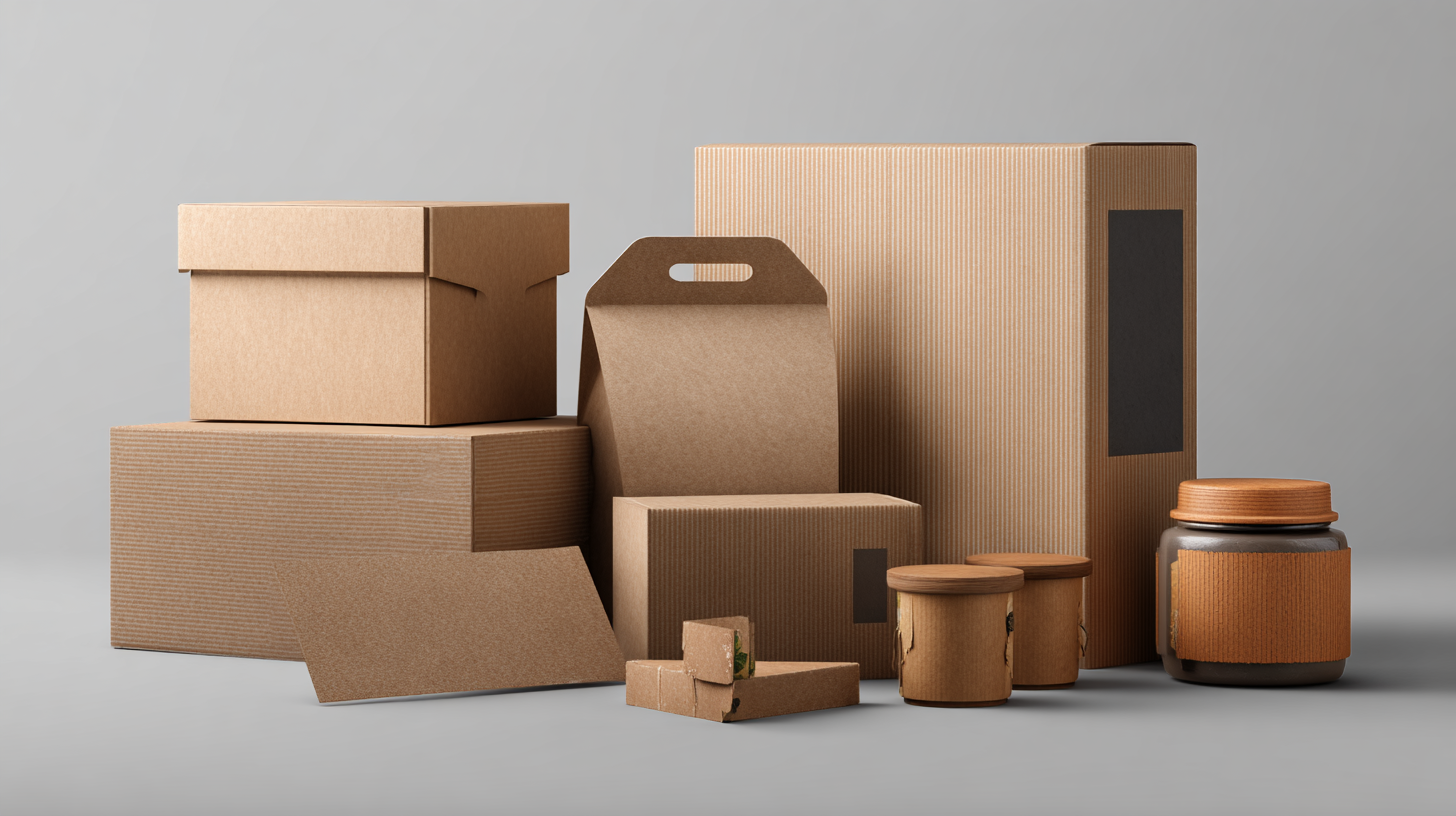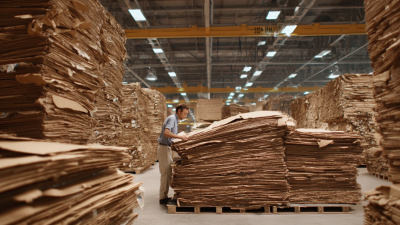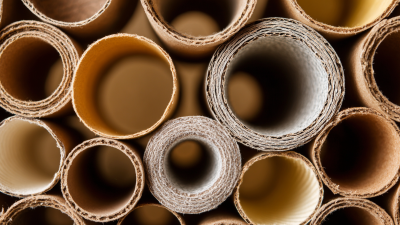Essential Guide to Eco-Friendly Postal Packaging: Sustainable Solutions for Modern Shipping
In today's fast-paced e-commerce landscape, the necessity for sustainable practices is more critical than ever, particularly in the realm of postal packaging. According to a report by ResearchAndMarkets, the global green packaging market is projected to reach USD quintillion by 2027, underscoring the urgent consumer demand for eco-friendly solutions. With approximately 30% of consumers willing to pay more for sustainable products, businesses are increasingly prioritizing environmentally-friendly postal packaging to enhance their brand reputation and meet regulatory requirements. Moreover, the shift towards renewable materials in packaging is driven by the impact of traditional packaging on environmental issues, such as plastic pollution and carbon emissions. As companies strive to differentiate themselves in a competitive market, exploring innovative and sustainable packaging solutions becomes not just a trend, but a necessity for success in modern shipping.

The Importance of Eco-Friendly Postal Packaging in Reducing Carbon Footprint
The rise of e-commerce has significantly increased the volume of packaged goods being shipped worldwide, contributing to an alarming increase in carbon emissions. According to a report by the Ellen MacArthur Foundation, the packaging sector alone accounts for around 26% of global plastic production. This immense reliance on traditional, single-use packaging materials not only poses environmental challenges but also escalates the carbon footprint associated with shipping. By adopting eco-friendly postal packaging solutions, businesses can make a substantial impact on reducing these emissions and fostering a more sustainable shipping ecosystem.
Eco-friendly packaging options, such as biodegradable materials and recycled content, not only minimize waste but also significantly lower carbon emissions associated with production and disposal. A study conducted by the Sustainable Packaging Coalition highlights that using recycled paper products can reduce greenhouse gas emissions by up to 40% compared to virgin materials. Moreover, packages designed for reuse or composting contribute to closing the loop in the supply chain, thereby reducing the overall demand for new raw materials. As consumers increasingly prioritize sustainability, companies embracing eco-friendly postal packaging are not only doing their part to combat climate change but also meeting growing customer expectations for environmentally responsible practices.

Statistics on Packaging Waste: A Closer Look at Global Shipping Practices
The significance of addressing packaging waste in global shipping practices is underscored by alarming statistics. According to recent studies, the packaging industry generates over 300 million tons of plastic waste annually. This staggering figure represents a significant portion of the waste stream, highlighting the urgent need for businesses to adopt sustainable packaging solutions. Not only does packaging waste contribute to environmental degradation, but it also poses a pressing challenge for modern shipping logistics, where efficiency must align with ecological responsibility.
As consumers become increasingly aware of their ecological footprint, the demand for eco-friendly packaging options is rising. Many firms are now reassessing their materials and processes to mitigate their environmental impact. Innovative alternatives such as biodegradable packaging, recycled materials, and reusable containers are gaining traction as viable solutions. Furthermore, statistics reveal that companies that prioritize sustainability in their packaging not only contribute positively to the environment but also enhance their brand reputation and customer loyalty, demonstrating that eco-consciousness can go hand in hand with profitability in the modern marketplace.
Global Packaging Waste Statistics (2023)
Innovative Bio-Based Materials: Revolutionizing Sustainable Shipping Solutions
In the realm of sustainable shipping solutions, innovative bio-based materials are playing a pivotal role in transforming the packaging landscape. The global market for sustainable paper chemicals is projected to reach approximately USD 38.2 billion by 2024, with a compound annual growth rate (CAGR) of over 4.4% expected through 2034. This growth is driven by increased consumer demand for environmentally friendly packaging options, accentuating the shift towards materials that reduce carbon footprints while maintaining product integrity.

Innovations such as bio-based coatings and edible packaging are revolutionizing how products are shipped and preserved. For instance, smart freshness sensors incorporated into food packaging not only enhance consumer safety but also minimize waste by providing real-time updates on product freshness. Advents in packaging technology, like sustainable MAP trays, highlight the intersection of material science and artificial intelligence, creating solutions that extend shelf life and reduce spoilage. As these advancements continue to gain traction, the packaging industry is poised to align more closely with sustainability goals, benefiting both businesses and the environment.
Consumer Demand for Sustainability: How Eco-Friendly Packaging Drives Sales
As consumer awareness about environmental impact rises, demand for eco-friendly packaging has become a significant driver of sales across multiple sectors. Recent trends indicate that consumers increasingly favor recyclable, minimal, and clearly labeled packaging options. Companies adopting sustainable practices not only enhance their brand value but also align with the purchasing preferences of a growing market segment that prioritizes environmentally responsible choices.
Tips for implementing eco-friendly packaging solutions include assessing the materials used in your packaging and opting for recyclable or biodegradable options. Consider incorporating minimalistic designs that reduce waste while still delivering quality presentation. Additionally, clear labeling about sustainability features can boost consumer trust and encourage purchases.
The global sustainable packaging market is projected to reach unprecedented values in the coming years, reflecting a continuing shift toward environmentally conscious consumer behavior. Businesses that strategically invest in sustainable packaging solutions will not only meet current consumer demands but position themselves advantageously in an evolving market landscape. Adapting to these preferences can lead to improved sales and a stronger brand reputation among eco-conscious consumers.
Essential Guide to Eco-Friendly Postal Packaging: Sustainable Solutions for Modern Shipping
| Packaging Type | Material | Sustainability Rating | Cost Efficiency | Consumer Demand (%) |
|---|---|---|---|---|
| Recyclable Boxes | Recycled Paper | High | Moderate | 75 |
| Biodegradable Mailers | Plant-based Polymers | Very High | High | 80 |
| Recycled Padded Envelopes | Recycled Materials | Moderate | Low | 65 |
| Compostable Packaging | Corn Starch | Very High | Moderate | 70 |
| Reusable Shipping Containers | Plastic/Metal | High | High | 60 |
Cost-Effectiveness of Sustainable Packaging: Balancing Budget and Environmental Impact
In the quest for sustainable shipping solutions, cost-effectiveness remains a critical consideration for businesses. Eco-friendly postal packaging doesn't have to be an expensive endeavor; in fact, it can provide both economic and environmental benefits. By investing in materials such as biodegradable films, recycled cardboard, and compostable fillers, companies not only reduce their carbon footprint but also often find that their overall mailing costs decrease. These materials can be cheaper in the long run, especially when considering the savings from bulk purchases and efficiency in shipping.
Moreover, businesses that adopt sustainable practices can enhance their brand image and customer loyalty. Consumers are increasingly inclined to support brands that prioritize eco-friendliness, which can lead to higher sales and customer retention. By balancing budget constraints with environmentally responsible choices, companies position themselves as leaders in the market. Utilizing sustainable packaging solutions fosters a positive corporate image well beyond just financial figures; it aligns businesses with a growing trend that values environmental stewardship, ultimately contributing to a healthier planet.
Related Posts
-

Unlocking the Advantages of Postal Packaging for Efficient Cost Savings and Sustainability
-

Why Recycled Cardboard is the Key to a Sustainable Packaging Future
-

Mastering A2 Postal Tubes Your Ultimate Guide to Perfect Packaging
-

7 Best Reasons to Choose Cardboard Tube Boxes for Your Global Packaging Needs
-

Exploring Market Trends and Opportunities for Cardboard Tubes at the 138th Canton Fair in 2025
-

Innovative Uses for Cardboard Tubes You Never Thought About